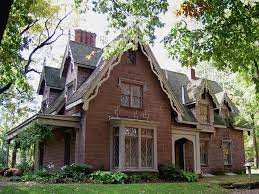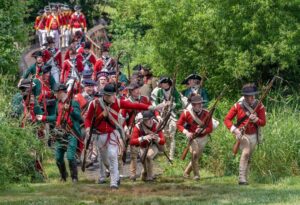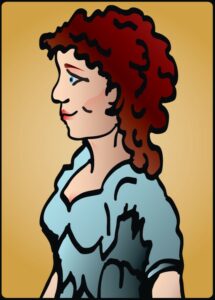The Hermitage
A  two-story stone farmhouse was built on the property in the mid-1700s. Following the French and Indian War, the house was purchased by James Marcus Prevost, an officer in the British Army. At the dawn of the revolution, Prevost was recalled into active duty, leaving his wife and five children at the Hermitage.
two-story stone farmhouse was built on the property in the mid-1700s. Following the French and Indian War, the house was purchased by James Marcus Prevost, an officer in the British Army. At the dawn of the revolution, Prevost was recalled into active duty, leaving his wife and five children at the Hermitage.
As the wife of a British officer, Theodosia Prevost faced increasing obstacles as lines were drawn and loyalties tested on the home front of the American Revolution. Bergen County, specifically around Paramus, was a hot bed of military activity during the war. Both the British and the Americans raided local farms, confiscated goods, and attacked enemy supply chains. While Major (later Lieutenant Colonel) Prevost was fighting for the British in Georgia and South Carolina, the women and children were left alone in Ho-Ho-Kus. During this period, Bergen County was in the center of the conflict, with troops from both sides passing through the area with regularity.
In July of 1778, word reached Theodosia that George Washington and his troops would be passing through Ho-Ho-Kus on their way from the recent battle at Monmouth Courthouse to White Plains in Westchester County. When the General and his entourage stopped at a local house, Theodosia sent an invitation to Washington for him and his men to come and stay at The Hermitage. She said that the accommodations were the “most commodious in the area”. Washington accepted her offer and for four days, from July 10th to the 14th, he and his officers were entertained at this site.
Among the visitors to the house during the Revolution were James Monroe, William Paterson, the Marquis de Lafayette, Alexander Hamilton, Lord Sterling, Peggy Shippen Arnold and Aaron Burr. Burr, who had been stationed just north of here at an area known as The Clove, became a frequent visitor to the site. Following the war, and the ensuing death of Lieutenant Colonel Prevost, Burr and Theodosia’s friendship led to a courtship that resulted in their marriage at The Hermitage in July of 1782. Following Ann DeVisme’s death and Burr’s brief ownership of the property, the house passed through three owners before being sold in 1807 to Elijah Rosegrant and his wife Cornelia Suffern. Thus began a tenancy in the house by one family that was to last for 163 years until the last surviving member of the family willed the property to the State of New Jersey upon her death in 1970.
In 1847, Elijah Rosencrantz, Jr. commissioned the well-known architect William Ranlett to construct a romantic Victorian residence which would incorporate the historic Colonial house known as The Hermitage. The resultant building is a significant example of the Gothic Revival style, with tall, gable roofs, elaborate bargeboards, diamond paned windows and pointed Tudor arches. The rear summer kitchen dates to the 1880’s.


